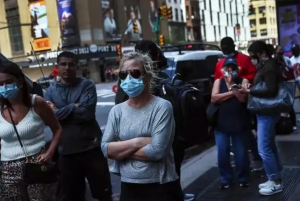
New Coronary Pneumonia Prevention and Control Program (9th edition) should know
25, centralized isolation during the opening of the monitoring content is what?
A: During the opening of the centralized isolation site, regular environmental sampling nucleic acid testing. Focus on the living area, staff access and isolation of personnel access door handles, garbage, countertops, cleaning tools and other parts of the sampling test.
26、Concentrated isolation before the release of isolation items, environmental monitoring content is what?
A: Centralized isolation staff should be collected before the release of isolation room items environment (including cell phone surface, luggage items, pillow surface, bathroom door handles, etc.) specimens for nucleic acid testing.
27、How should the community monitor in the management of discharged (cabin) personnel?
A: Nucleic acid testing should be conducted on the third and seventh day after the discharge (cabin) of the newly discharged (cabin) infected patients and their co-inhabitants who are under community management.
28、What are the requirements for environmental monitoring of imported goods and places?
A: (1) of imported cold chain food and its processing, transportation, storage and other places of the environment to carry out appropriate sampling nucleic acid testing; ports of entry from high-risk city and low-temperature transport environment of imported goods and their compartments, containers, carriages, containers and cargo storage places to carry out sampling nucleic acid testing, winter low-temperature conditions can increase the frequency of testing and the number of samples.
(2) the urban cold chain food wholesale sales of large farmers (market) market environment regularly carry out nucleic acid testing. Sewage monitoring may be carried out regularly for large maritime import frozen goods processing and handling sites.
29、How does the chain of command operate after an epidemic?
A: Immediately after the outbreak, the command system should be activated to quickly complete the conversion of normal and emergency mechanisms, to establish a front-line command center at the local (city) level, provincial, municipal and county joint prevention and control mechanisms in concert, flattening the operation, coordinating the dispatch of resources, and decisively take response and disposal measures.
30、New crown epidemic need to control which sources of infection?
A: Confirmed cases, suspected cases, asymptomatic infected persons, and persons with positive nucleic acid tests after discharge (cabin) (re-positive cases).
31、What are the conditions for asymptomatic infected persons to be released from centralized isolation?
A: Asymptomatic infected persons are managed with reference to light cases and are placed under intensive medical observation for 7 days in a square cabin hospital, during which a nucleic acid test is carried out on the 6th and 7th day for each nasopharyngeal swab (sampling time interval of at least 24 hours), and if the Ct values of N gene and ORF gene are ≥35 for both nucleic acid tests (fluorescence quantitative PCR test method, the threshold value is 40, the same below), or the test is negative ( The fluorescence quantitative PCR test method, the threshold value is lower than 35), can be released from the centralized isolation of medical observation in the square cabin hospital.
32、How should the close contacts of the re-positive persons be investigated and controlled?
A: After the discharge of the previously infected person (cabin), the respiratory specimen is positive for nucleic acid, if no symptoms and signs appear and the Ct value of the nucleic acid test is ≥35, no longer manage and determine the close contacts; if the Ct value of the nucleic acid test is <35, combine with the disease duration and dynamic changes in the Ct value to quickly assess the risk of transmission, if there is a risk of transmission according to the management of the infected person, determine and control their common residence, common work and other contacts Frequent close contacts, no need to determine close contacts of close contacts; if there is no risk of transmission, no more management and determination of close contacts. If clinical manifestations such as fever, cough, or CT imaging shows aggravation of lung lesions, the patient should be immediately transferred to a designated medical institution for classification and management treatment according to the condition. If the Ct value of nucleic acid test is ≥35, there is no need to track and control their close contacts; if the Ct value of nucleic acid test is <35, the close contacts with whom they live together, work together and other frequent contacts should be judged and controlled, and there is no need to judge the close contacts of close contact.


Average Rating